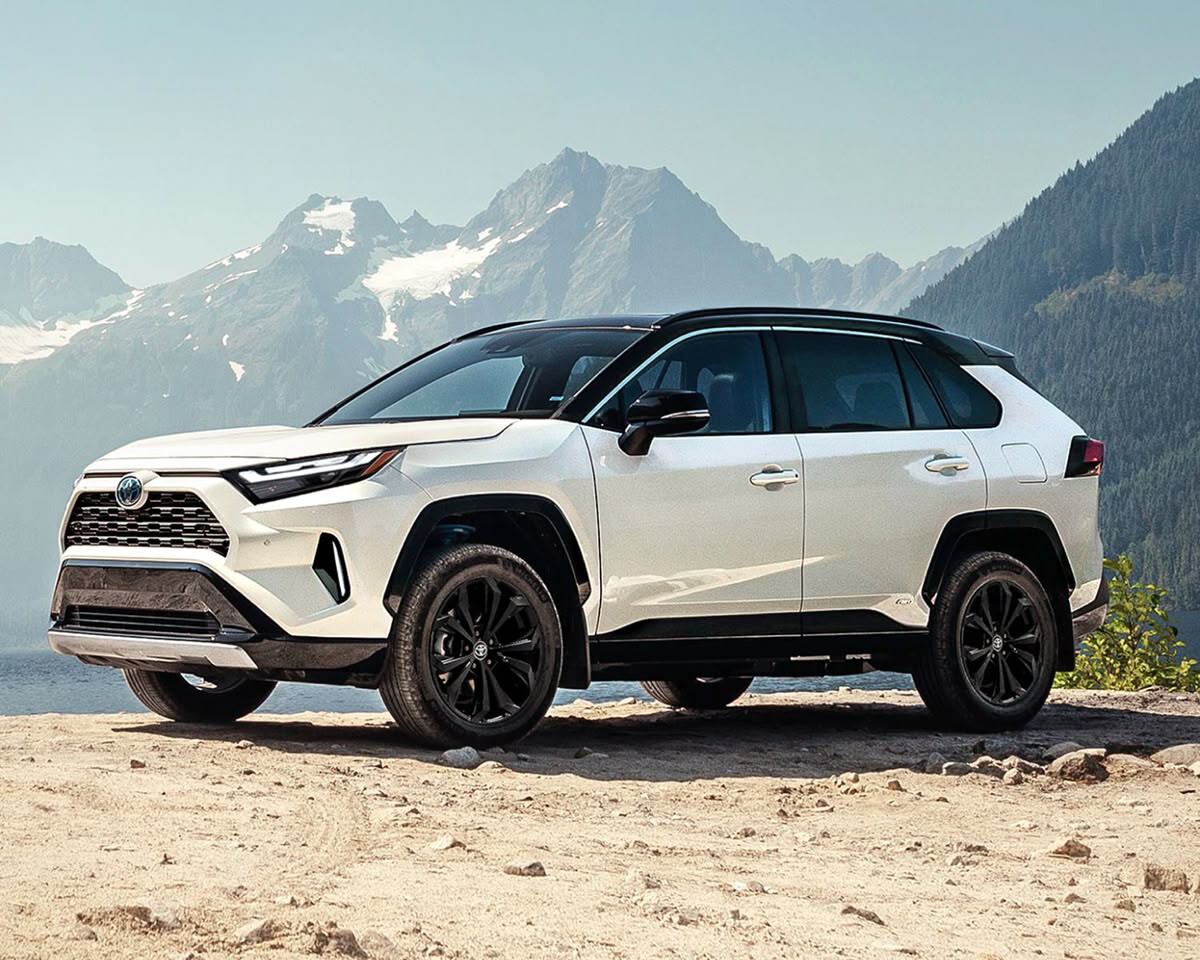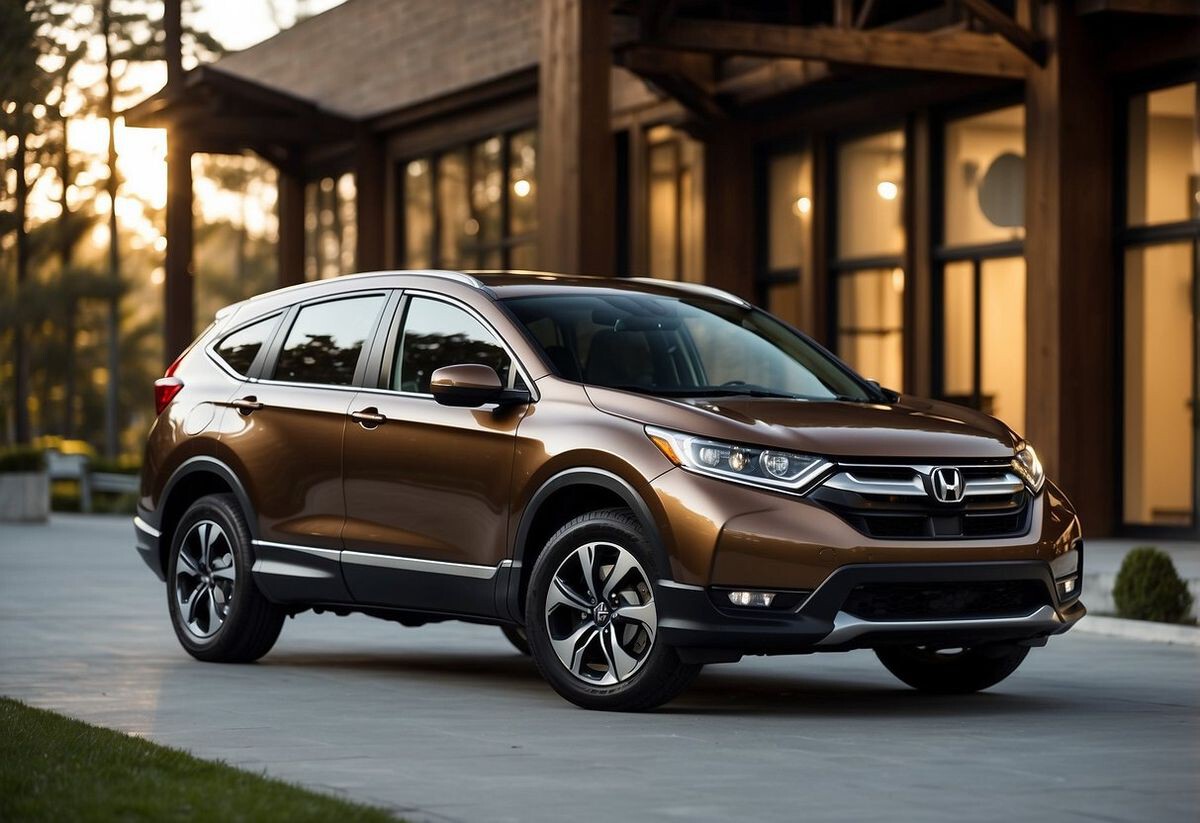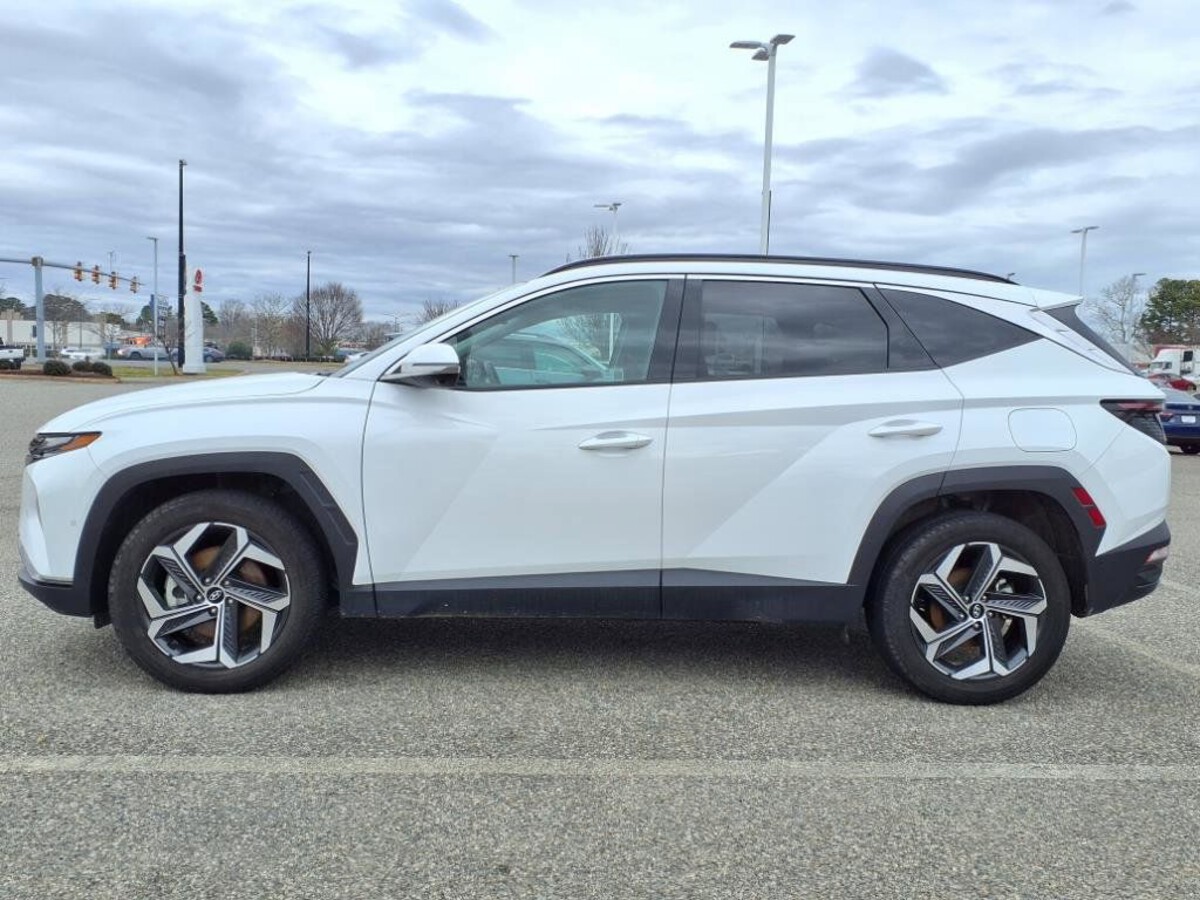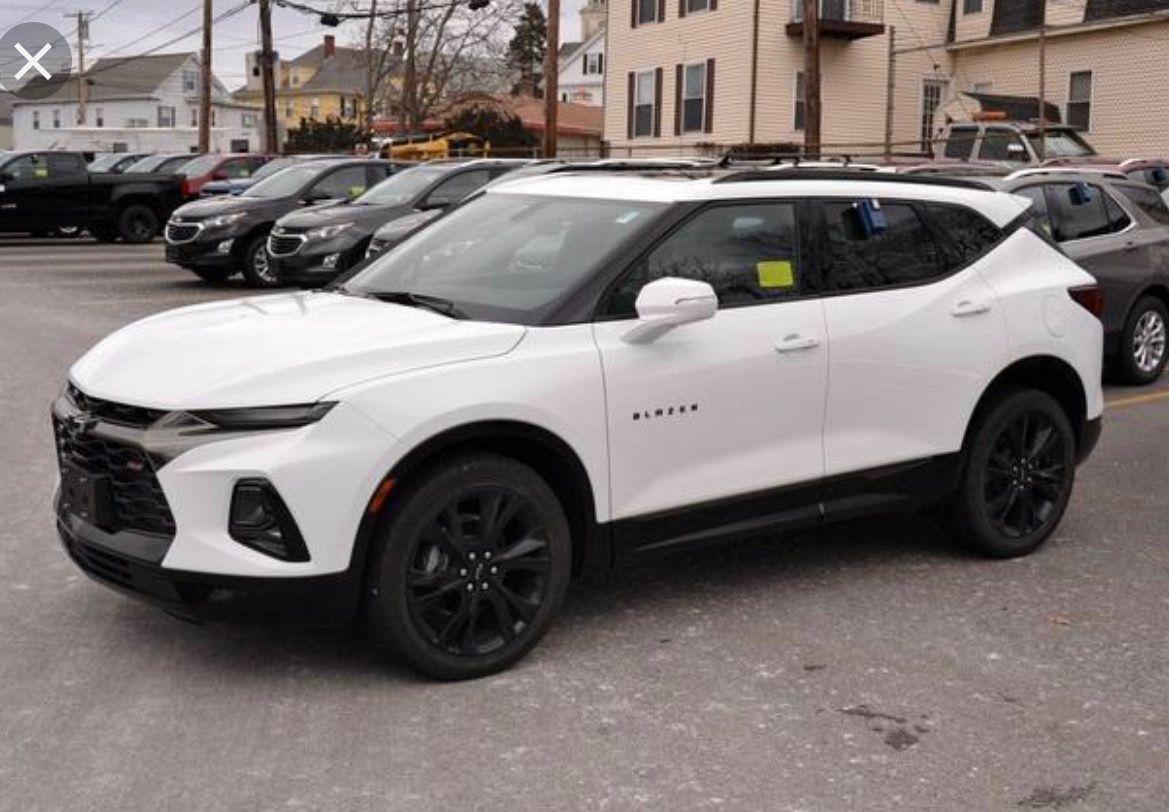Let’s talk about something car manufacturers never bring up in flashy ads—cargo lids that attack tall people. Yeah, we said it.
You’ve probably seen it (or felt it): you’re loading groceries, gym bags, or your entire adulting stress into the back of your crossover, and BAM—your forehead just kissed the rear liftgate. Tall drivers know the pain too well. It’s not just inconvenient; it’s a forehead-shaped dent in your pride.
Now, you’d expect modern crossovers—some of them priced high enough to make your wallet cry—to get the basics right, like, I don’t know, leaving enough headroom when the cargo lid is up? But nope.
Some popular crossovers are straight-up backstabbers when it comes to tall-person ergonomics. Whether it’s low-hanging liftgates, half-hearted struts that stop mid-swing, or angled rooflines that cut clearance, these models are repeat offenders.
So if you’re 6 feet or above, this list is your cheat sheet. We dug into six crossovers that are practically booby traps for tall folks trying to load their trunk. We’ll tell you what makes them great otherwise, but also why their tailgate design is the worst if you value your skull.
ALSO READ: 5 Trucks That Dominate in Snow and 5 That Struggle Off-Road
1. Mazda CX-5
Ah, the Mazda CX-5—sleek, sporty, and one of the most fun-to-drive crossovers in its class. Great engine, sharp handling, upscale interior… and a rear hatch that hates tall people.
Seriously, Mazda must’ve designed this one for drivers under 5’10”, because the liftgate clearance is barely passable if you’re above 6 feet.

When fully opened, the cargo lid reaches around 68 inches from the ground. That’s just 5’8″, folks. Add in your shoes, any hairstyle with volume, and you’ve got a collision waiting to happen.
Mazda didn’t bother giving extra lift range to the power tailgate, and even on the top trims, it doesn’t go much higher. There’s no memory height setting either, so you’re stuck dodging it forever or keeping a mini hardhat in your glove box.
The cargo space itself is decent—30.9 cubic feet behind the second row and 59.6 when the seats are down. But let’s be honest: what’s the use if you have to crouch like Gollum to use it?
Tall folks, be warned: you’ll either need ninja reflexes to duck fast or learn to embrace forehead bruises. Great crossover otherwise—but in terms of tailgate clearance? Hard pass if you enjoy standing upright.
2. Toyota RAV4
You’d think a best-seller like the Toyota RAV4 would get the basics right. And for the most part, it does. It’s reliable, efficient, and full of practical features. But open that rear liftgate and—whack—say hello to the RAV4’s secret weapon: low cargo lid clearance.

The RAV4’s power liftgate opens to around 68–69 inches high, depending on trim and options. That’s still under 5’9″, and if you’re 6’1″ or more, it’s forehead roulette every time.
Some trims let you manually adjust the opening height, but even then, it’s not enough to fully accommodate taller folks. And if you’re parked on an incline? Forget it. It swings even lower.
Why this is a problem: the RAV4 is everywhere. And people trust it to be the dependable family hauler, weekend warrior, and grocery-getter.
But for taller drivers, it’s a daily reminder that Toyota didn’t factor in height when designing the rear end. You either lean back awkwardly like you’re in The Matrix or risk bumping your head during every Costco run.
On the plus side, the cargo space is solid—37.6 cubic feet with the seats up, and 69.8 with them down. That’s huge. But again, not much comfort if you have to bend like a shrimp every time you load something in.
So if you’re tall and considering the RAV4? It’s still a solid pick—but get ready to duck.
3. Subaru Forester
Subaru markets the Forester as the outdoorsy crossover for tall, rugged adventurers. Funny then, that its liftgate isn’t built for tall humans. Even though the cabin has excellent headroom up front, Subaru didn’t translate that consideration to the rear cargo area.

The powered rear liftgate opens to about 68.5 inches—again, that dreaded number under 5’9″. If you’re 6’2″, that’s a big problem. And while the Forester’s wide hatch opening is great for stuffing camping gear, bikes, and dogs, you’ll be dodging the lid like it’s a ninja trap.
Subaru claims the tailgate height is “adjustable,” but let’s be honest—how much does that really help when the top height is still borderline forehead-smashing for taller folks?
It’s not even about tall people being overly dramatic. This is a legit design flaw for anyone who doesn’t want to bend at the neck to load a cooler or suitcase.
Interior space? Amazing. The Forester gives you 31.1 cubic feet with the rear seats up, and a cavernous 76.1 cubic feet when they’re down. But that great space inside becomes useless real quick if you’re knocked out before you even get in there.
For a car aimed at outdoor lifestyles and gear-hauling, Subaru really dropped the ball on rear liftgate clearance. If you’re tall and active, you’ll be annoyed every time you load your stuff.
ALSO READ: 5 Electric Cars That Keep Performing After 100K Miles and 5 That Don’t
4. Honda CR-V
Honda’s CR-V is basically the crossover version of “you can’t go wrong.” It’s practical, smooth, efficient, and holds its value better than most relationships these days. But there’s one thing Honda did get wrong: the liftgate clearance.

Tall drivers, brace yourselves. The power tailgate on the CR-V opens to roughly 68–69 inches max. That’s not tall-friendly at all. You can “adjust” the opening height, but there’s no magic setting to make it rise above the pain zone for tall folks.
This is frustrating because the CR-V nails so many other design elements. Cabin comfort is top-tier. Legroom is solid in both rows.
The cargo space is outstanding—39.2 cubic feet behind the second row, expanding to 75.8 cubic feet with the seats down. That’s one of the largest in the class. But it all gets overshadowed when tall folks have to crouch to access it.
Even worse? If the liftgate’s hinges start aging or losing tension, it can start to sag a bit lower over time, especially in colder weather. So what’s already a close call becomes a forehead-smacking guarantee after a few winters.
The CR-V is reliable and well-built, no question. But if you’re tall and planning to use the trunk a lot, this crossover will test your patience—and possibly give you a bump or two.
5. Hyundai Tucson
The Hyundai Tucson’s sharp new design might fool you into thinking it’s all clever and well-thought-out. And in many ways, it is—futuristic styling, smooth ride, great tech. But once again, tall folks get left behind. The cargo lid clearance is just meh.

Fully raised, the power liftgate reaches just about 68 inches. That’s right in the danger zone for anyone 6 feet and above.
Tucson owners have shared stories of ducking, flinching, or flat-out smacking their heads while trying to load or unload gear. And Hyundai doesn’t give much room to adjust the lift height in the lower trims either.
For context, this is a car that’s otherwise very user-friendly. Interior space is good. The cargo area offers 38.7 cubic feet with the seats up and 74.8 with them down. That’s big enough for road trips, furniture runs, or your growing pile of “return-to-Amazon” boxes. But none of that matters if you have to bend like a yoga instructor just to load your groceries.
Tall users on forums have joked about installing foam pads or wearing baseball caps as makeshift protection. That says enough.
Hyundai’s Tucson might be smart in design overall, but when it comes to tall-driver ergonomics at the back end? It flops hard. If your forehead is over 70 inches from the ground, just know—you’re not welcome at the Tucson’s tailgate.
6. Chevrolet Equinox
The Chevy Equinox is the “middle child” of the crossover world—nothing too flashy, but solid all-around. Except, again, if you’re tall. Because guess what? The cargo liftgate opens to—you guessed it—just under 69 inches. We’re seeing a pattern here.

Despite offering a decent ride, comfortable seating, and acceptable cargo space (29.9 cubic feet behind the second row, 63.9 when folded), the Equinox fails to clear that magic 70-inch mark for the rear liftgate. For someone who’s 6’2″ or more, this means bending awkwardly every time you pop the trunk.
You’d think GM would’ve added a few extra inches of lift or smarter struts. But nope. Even the power liftgate on higher trims doesn’t rise much more.
And it’s not just about hitting your head—it’s also the mental fatigue of always having to crouch and worry about it. Loading stuff becomes a chore, not a convenience.
What makes it worse? This isn’t even a small crossover. The Equinox has the size and shape to accommodate a higher tailgate—Chevy just didn’t prioritize it. If you’re short, you’re golden. If you’re tall, you’ll start associating this crossover with neck strain and head bumps.
But the liftgate height? Definitely designed by someone under 5’10”. So there you go—six popular crossovers that, for all their strengths, have one brutal flaw in common: low rear liftgates that hate tall drivers. The worst part? These aren’t obscure models. These are best-sellers. Industry favorites.
Cars that get praise for comfort, safety, and design—yet somehow fail the basic test of “can a tall person stand under the trunk without getting smacked?”
To be fair, cargo space measurements look great on paper. But paper doesn’t factor in real-life skull-to-metal interactions. And sure, some of these models let you “adjust” the opening height—but for tall people, adjusting down doesn’t help, and adjusting up rarely solves the problem entirely.
If you’re tall and shopping for a crossover, you’ve got to do your own testing. Don’t just look at specs. Go to the dealership, pop the trunk, and stand there. If you flinch, that’s your sign.
Manufacturers need to stop ignoring height inclusivity when designing rear ends. Because right now? It’s a tall person’s war zone out there.

